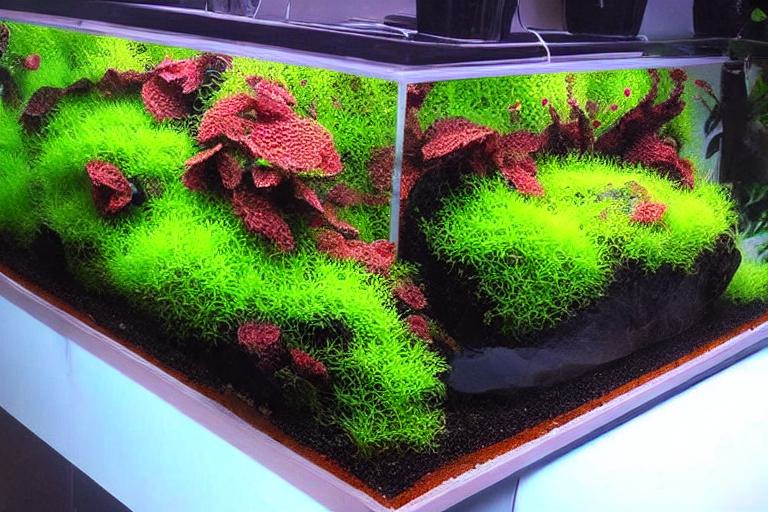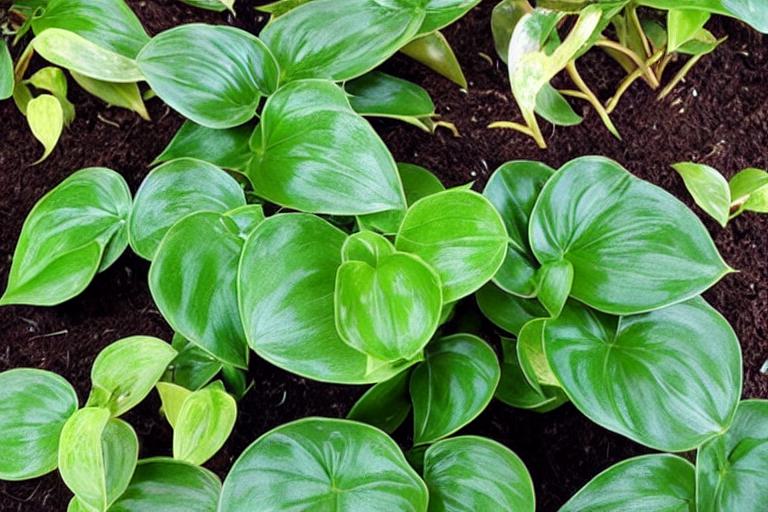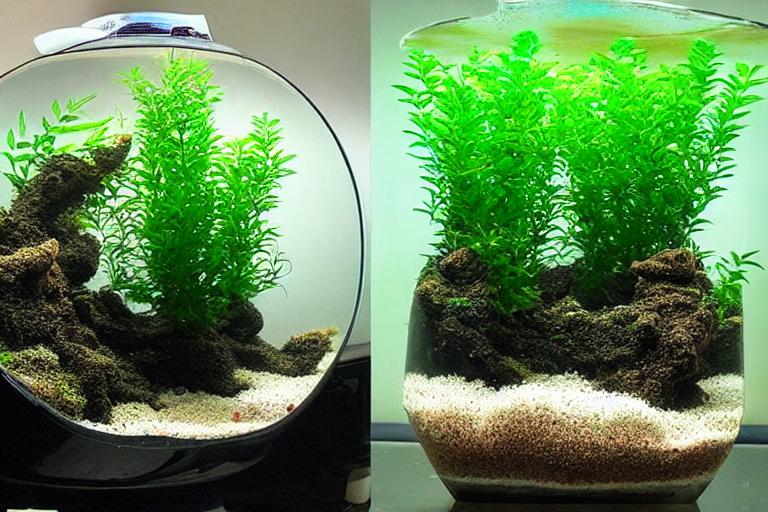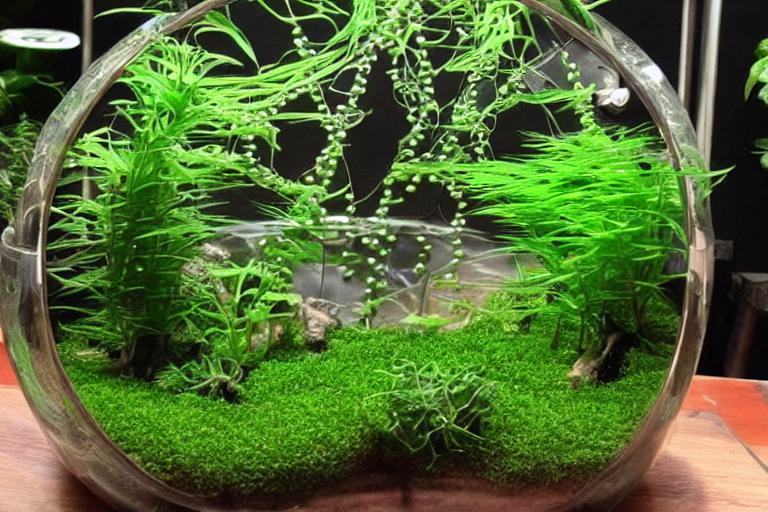A paludarium is a type of terrarium that contains both aquatic and terrestrial plants. They can be used to create a unique and beautiful ecosystem for your home or office. Paludariums can be small or large, simple or complex. The key to success is to choose the right plants for your paludarium. In this article, we will show you the top 9 best plants for your paludarium with pictures.
Red Rotalia (Rotala rotundifolia)
Red Rotalia can reach a height of up to 12 inches and has small, round leaves. It is a popular plant for aquariums and paludariums because it is easy to care for and grows well in both aquatic and terrestrial environments. This plant prefers moderate lighting and should be fertilized regularly. Red Rotalia (Rotala rotundifolia) is a beautiful, red-colored plant that is native to Southeast Asia. Red Rotalia is a fast-growing plant and can quickly become overcrowded, so it is important to trim it back periodically.

Pothos (Epipremnum aureum)
It is a great plant for beginners and is very easy to care for. It is an evergreen climber with heart-shaped leaves that can range in color from green to yellow to white. Pothos (Epipremnum aureum) is a beautiful and hardy plant that makes an excellent addition to any paludarium. Pothos is a fast-growing plant and can quickly cover large areas of your paludarium.

Java moss (Taxiphyllum barbieri)
Java moss can be attached to rocks or driftwood and will eventually form a dense mat. Java moss is a popular plant for paludariums because it is easy to care for and can thrive in a variety of conditions. Java moss is also a good plant for breeding fish because the dense mat provides hiding places for fry. This plant is a great addition to any paludarium because it provides cover for fish and other aquatic animals.

String of Pearls (Curio rowleyanus)
The String of Pearls (Curio rowleyanus) is a beautiful, trailing succulent that is perfect for your paludarium. The String of Pearls is a drought tolerant plant and can tolerate brief periods of flooding. The plant prefers bright, indirect light but can tolerate some direct sun. The String of Pearls is a low maintenance plant that is easy to care for. The plant is native to Madagascar and is a member of the Asteraceae family. The String of Pearls is a succulent that is characterized by its small, round leaves that are arranged in a string-like fashion. The plant is a fast grower and can reach lengths of up to 6 feet. The plant is not frost tolerant and should be protected from cold temperatures.

Peace Lily (Spathiphyllum wallisii)
Its glossy green leaves and white flowers add a touch of elegance to any setting, and its ability to thrive in both low-light and high-humidity environments makes it a versatile plant that can be enjoyed by both beginner and experienced hobbyists alike. The peace lily is a beautiful, easy-to-care-for plant that makes a great addition to any paludarium.
Anubias Barteri
It is native to tropical Africa, from Senegal to Uganda. The flowers are small and white, and the spadix is greenish-white. Anubias barteri is a species of flowering plant in the family Araceae. The flowers are produced in a spadix, which is surrounded by a spathe. It is a herbaceous perennial plant growing to 20–50 cm (8–20 in) tall, with a rhizome. The leaves are variable in shape, but are typically oblanceolate to obovate, with a pointed tip, and measure 5–30 cm (2–12 in) long and 2–10 cm (1–4 in) wide.
It is slow-growing and does not require much maintenance. Anubias barteri is a popular plant for aquaria and paludariums. It is easy to care for and can tolerate a wide range of conditions. Anubias barteri is a good choice for beginners and experienced hobbyists alike.
Philodendrons
Many species of philodendrons are popular houseplants because they are easy to grow and care for. Philodendrons are also a popular choice for paludariums because they can tolerate a wide range of conditions and can thrive in both wet and dry environments. Philodendrons are a genus of around 600 species of flowering plants that are native to the Americas.
Some of the most popular philodendron species for paludariums include the heartleaf philodendron (Philodendron hederaceum), the fiddle leaf philodendron (Philodendron panduriforme), and the tree philodendron (Philodendron bipinnatifidum). Philodendrons are available in a wide variety of shapes and sizes, so there is sure to be a philodendron that is perfect for your paludarium.
With a little bit of care, your philodendron will thrive and add a touch of beauty to your paludarium. Philodendrons are easy to care for and can tolerate a wide range of conditions, making them a perfect choice for your paludarium.
Hornwort (Ceratophyllum demersum)
Hornwort is a great plant for your paludarium because it helps to oxygenate the water and provides shelter for fish and other aquatic creatures. Hornwort is a fast-growing plant and can reach up to 3 feet in length. Hornwort is also a very low-maintenance plant and does not require special care or attention. It is commonly found in ponds, lakes, and streams. Hornwort (Ceratophyllum demersum) is a submerged aquatic plant that is native to North America. Hornwort gets its name from the sharp, horn-like points on its leaves.
Bladderworts (Utricularia)
Bladderworts (Utricularia) are one of the best plants for your paludarium. Bladderworts are easy to care for and can thrive in a variety of conditions. They are aquatic carnivorous plants that trap and digest small prey.
They can be found in a variety of habitats, including ponds, marshes, and bogs. Bladderworts are native to temperate and tropical regions of the world.
They can be grown in a variety of substrates, including sand, gravel, and soil. Bladderworts prefer moderate to high humidity and moderate to high light. Bladderworts are relatively easy to care for.
Bladderworts are excellent plants for your paludarium. They are easy to care for and can thrive in a variety of conditions.

Sources
The word “paludarium” comes from the Latin word for swamp. A paludarium is a type of vivarium that contains both aquatic and terrestrial plants.
A paludarium can be a simple setup with just a few plants, or it can be a very complex ecosystem with many different types of plants and animals. No matter what type of paludarium you have, choosing the right plants is essential to the success of your vivarium.
Here are a few of the best plants for your paludarium: There are many factors to consider when choosing plants for your paludarium, such as the size of your vivarium, the type of plants you want to grow, and the climate you live in.
Bromeliads 1.
They are often found in rainforests and swamps. Bromeliads are a type of plant that is native to tropical and subtropical regions. Bromeliads come in a wide variety of colors and sizes, making them a great addition to any paludarium.
2. Ferns
They are a great choice for paludariums because they do not require direct sunlight and they are very low maintenance. Ferns come in a wide variety of shapes and sizes, so you can find one that is perfect for your vivarium. Ferns are a type of plant that is native to moist, shady environments.
3. Mosses
They are a great choice for paludariums because they do not require direct sunlight and they are very low maintenance. Mosses are a type of plant that is found in moist, shady environments. Mosses come in a wide variety of colors, so you can find one that is perfect for your vivarium.
Orchids 4.
Orchids come in a wide variety of colors and sizes, making them a great addition to any paludarium. Orchids are a type of plant that is native to tropical and subtropical regions. They are often found in rainforests and swamps.
5. Pitcher Plants
Pitcher plants come in a wide variety of colors and sizes, making them a great addition to any paludarium. They are often found in rainforests and swamps. Pitcher plants are a type of plant that is native to tropical and subtropical regions.
6. Sundews
Sundews come in a wide variety of colors and sizes, making them a great addition to any paludarium. Sundews are a type of plant that is native to tropical and subtropical regions. They are often found in rainforests and swamps.
Venus Flytraps 7.
Venus flytraps are a type of plant that is native to the southeastern United States. They are often found in swamps and bogs. Venus flytraps come in a wide variety of colors and sizes, making them a great addition to any paludarium.
Water Lilies 8.
Water lilies are a type of plant that is native to tropical and subtropical regions. Water lilies come in a wide variety of colors and sizes, making them a great addition to any paludarium. They are often found in rainforests and swamps.
Wetland Grass 9.
Wetland grass is a type of plant that is native to wetland environments. It is a great choice for paludariums because it can tolerate both wet and dry conditions. Wetland grass comes in a wide variety of colors, so you can find one that is perfect for your vivarium.
Frequently Asked Questions
What is a paludarium?
A paludarium is a type of terrarium that contains both aquatic and semi-aquatic plants. The word “paludarium” comes from the Latin word for swamp.
What are the benefits of having a paludarium?
A paludarium can help to purify the air in your home, increase humidity, and provide a naturalistic environment for your pets.
What are the best plants for a paludarium?
Some of the best plants for a paludarium include ferns, mosses, and air plants. These plants are able to tolerate both wet and dry conditions.
How do I choose the right plants for my paludarium?
When choosing plants for your paludarium, it is important to consider the size of your tank, the lighting conditions, and the humidity levels.
How do I care for my paludarium plants?
Caring for your paludarium plants is similar to caring for any other type of plant. Water them when the soil is dry, and fertilize them monthly.
What are some common problems with paludarium plants?
Some common problems with paludarium plants include root rot, leaf spot, and mealybugs.
Final thoughts
A paludarium is a unique and interesting way to spruce up your home or office. They can be created with a wide variety of different plants, but these are the top 9 best plants for your paludarium. With a little bit of creativity, you can create a stunning and one-of-a-kind display that will be the talk of the town.
